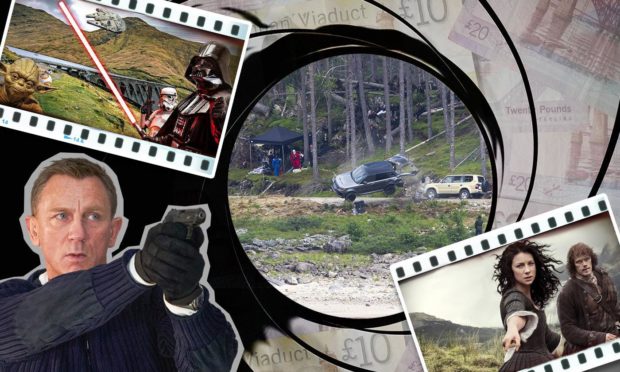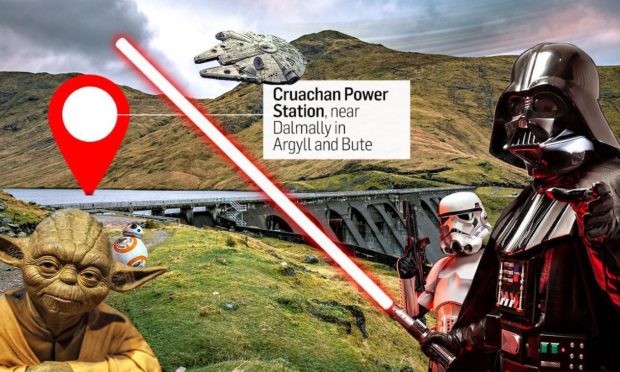Daniel Craig, in his curtain closing performance as James Bond, will hit the big screens later this month in the much anticipated No Time to Die.
The blockbuster – delayed due to the Coronavirus pandemic – is set to captivate the attention of 007 fans and film fanatics across the globe.
Scenes we have come to be familiar with of the famed British intelligence agent, such as shootouts and dramatic car chases, are sure to keep fans on the edge of their seats.
However, one car chase in particular may feel a bit closer to home.
Scottish Highlands chosen as a filming location for key shot
James Bond No Time to Die filmed in the Scottish Highlands in 2019, cast and crew descended on Laggan as dramatic shots of a Range Rover careering off a dirt track before being propelled high into the air were filmed for the latest title.
With other notable productions hitting the north of Scotland in recent months, just how much of an impact could their visit return for the local economy and tourism in the months to come?
Tony Mackay is a leading economist based in Inverness.
Can productions like James Bond No Time to Die help boost the Highland economy?
He estimates that the draw of 007, along with recent productions of Star Wars and Outlander at Cruachan in Argyll, could help attract new visitors to Scotland.
Mr Mackay has said the productions “certainly can have big impacts” with an estimate between 5% and 10%.
Mr Mackay said: “It is very difficult to generalise because of the variety of films.
“However, they certainly can have big impacts.
“On average, I believe those impacts could be in the 5%-10% range.
“Visit Scotland estimated that tourism expenditure in the Highlands in 2019 was just under £1.6 billion.
“A 5%-10% increase in that would be an additional £80-£160 million. That would be particularly beneficial in local areas such as Argyll where some of the Outlander and Star Wars films were made.”
Mr Mackay previously anticipated that the Scottish Highland economy would take more than two years to get back to pre-pandemic levels.
He estimates that the economic output of the Highlands, measured by gross domestic product (GDP), fell by 12.5% in 2020.
A rise of 6% is expected for 2021 with a slightly smaller rise of 5.2% in 2022.
The combination is still some 1.3% lower than 2020 levels, however, delivers some optimism for businesses and the wider Scottish economy.
He added: “The local tourism and hospitality industry has suffered seriously from the Covid-19 pandemic so it will undoubtedly be 2022 before some visitors return to the Highlands.”
Filming impact is felt ‘long after productions are broadcast’
Chris Taylor, VisitScotland’s regional leadership director, said: “We know the impact of screen tourism is felt long after productions are broadcast.
“We estimate that around one in five visitors are motivated to come to Scotland after seeing it on-screen and in these days of on-demand and multi-channel content, there are even greater opportunities for programmes to reach an audience and offer further inspiration.
“The unique heritage and stunning landscapes and scenery of the Highlands, which are huge drivers for visitors, are the same things that entice productions to Scotland.”
Mr Taylor said production of series such as Outlander has been a “huge success story” in attracting visitors.
The tourism chief said this brings “fantastic economic benefit for the local area”.
Hollywood productions are ‘transforming’ Scottish film and TV industry’s prospects
Isabel Davis, executive director at Screen Scotland, celebrated welcoming major film and television studio productions to the country.
She said: “Scotland has an unparalleled range of landscapes for location filming, from the scenic glens featured in No Time to Die to the cityscapes of Aberdeen and Glasgow, which can also double for any number of cities around the world.
“The gamechanger has been the recent increase in studio facilities across the country, which has anchored more large-scale productions in Scotland.
“Major projects such as Tetris, The Rig and Good Omens, in tandem with the long-standing impact of Outlander, are transforming our industry’s prospects, contributing to Scotland’s economic recovery through the creation of jobs, use of facilities and businesses and enabling sustainable, rewarding careers.
“Screen Scotland will continue to support the growth of infrastructure and crew, the development of locally originated film and TV content and to attract internationally financed production to Scotland.”




